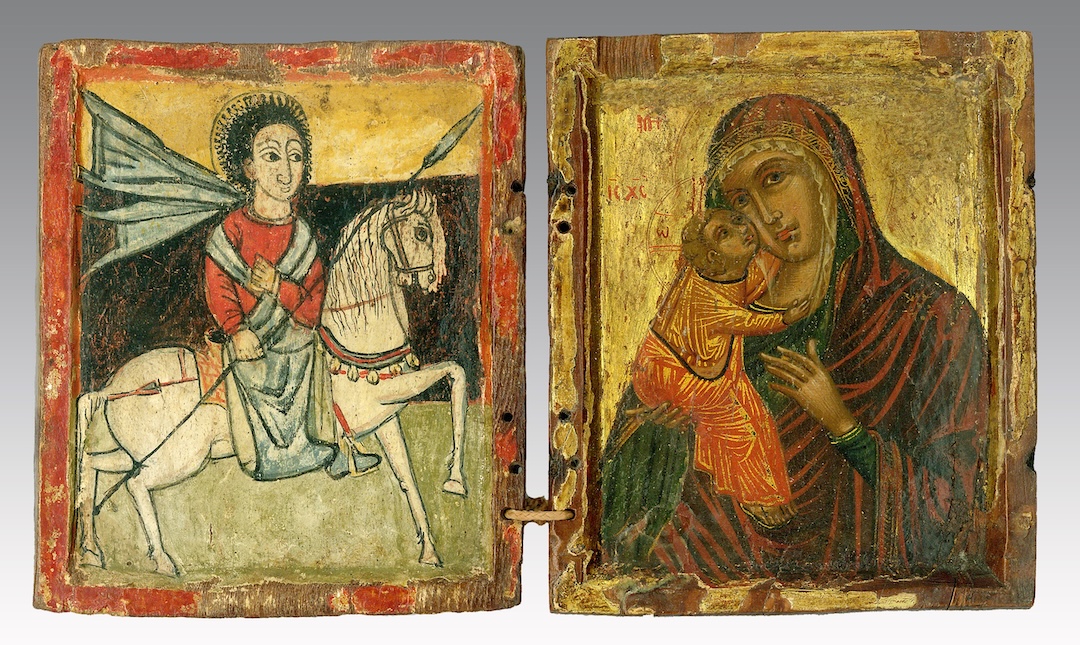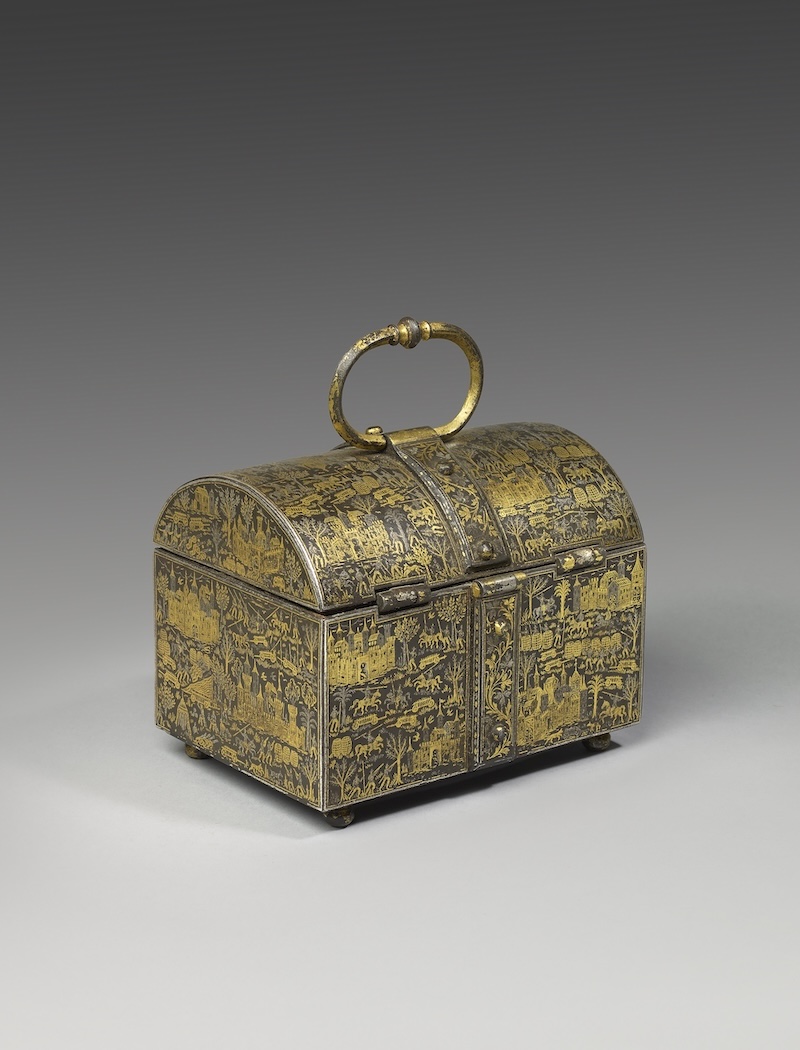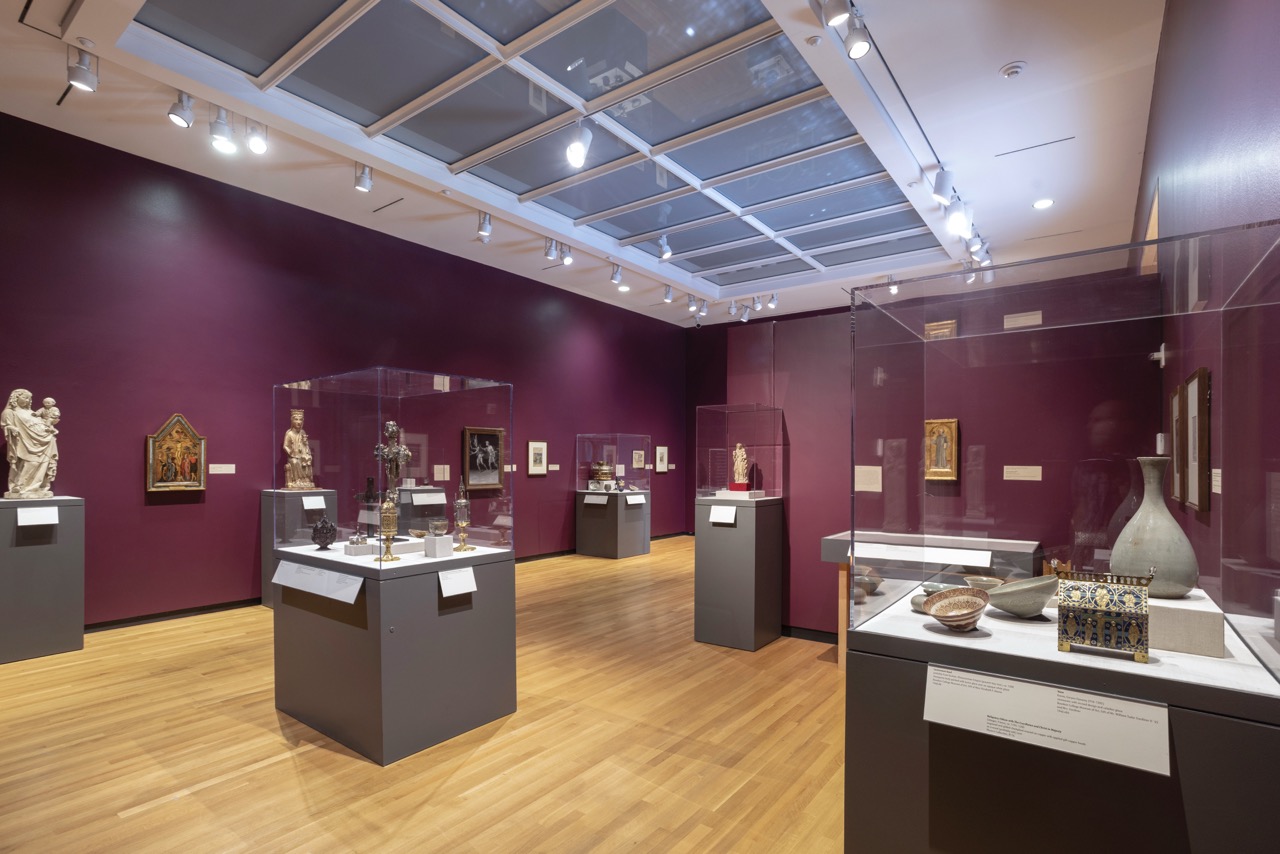Bowdoin College Museum of Art Announces Major Exhibition and Long-Term Loan Partnership with Wyvern Collection
By Bowdoin College Museum of Art
Diptych Icon with Saint George and The Virgin and Child, Left wing: Saint George (Ethiopian ca. 1500); right wing: Virgin and Child (Cretan ca. 1460-80), tempera on wood, 4 13/16 x 7 7/8 in. (12.2 x 20 cm) (open), Wyvern Collection, UK
This fall, the Bowdoin College Museum of Art (BCMA) presents Medieval Art from the Wyvern Collection: Global Networks and Creative Connections, the first in a series of rotating exhibitions based on the Museum’s new partnership with the prestigious, London-based Wyvern Collection. One of the most exceptional private collections of medieval art and objects, the collaboration will bring more than 57 artworks to Bowdoin for study, teaching, and public exhibition.
The first installation in this collaboration, Medieval Art from the Wyvern Collection: Global Networks and Creative Connections combines artworks on long-term loan from the Wyvern Collection with key objects from BCMA’s own holdings to explore how recent scholarship is dramatically expanding our understanding of the historical period known as “the Middle Ages.” The exhibition challenges traditional Eurocentric views of the Middle Ages by shedding light on the ways that cultures interacted and evolved in ways not previously appreciated. These objects, created between the 3rd and 17th centuries across a vast geographic range—from Japan to the Spanish colonies in Mexico, and from northern Europe to Africa—reveal the sophisticated global networks of travel and trade that connected distant regions in ways previously unimagined.

Workshop of Diego de Caias, Box with Battle Scenes, mid-16th century, wrought iron, damascened with silver and gold, engraved, 4 1/2 x 5 11/16 x 3 15/16 in. (11.5 x 14.5 x 10 cm), Wyvern Collection, UK
“This partnership with the Wyvern Collection represents an extraordinary opportunity for our students, faculty, and the public to engage directly with exceptional works of medieval art,” said Anne Collins Goodyear, Co-Director of the Bowdoin College Museum of Art. “These objects will serve as powerful teaching tools, allowing us to explore the sophisticated artistic traditions and cross-cultural connections that defined the medieval world.” Added Frank Goodyear, Co-Director of the Museum, “The long-term loan arrangement ensures that these remarkable artworks will be available for sustained study and research, supporting both our academic mission and our commitment to making exceptional art accessible to our community.”
Among the exhibition’s highlights are several remarkable works that exemplify these cross-cultural connections:
- a fascinating diptych icon that reveals diplomatic and religious ties linking medieval Africa with the Mediterranean in combining a Cretan Virgin and Child (c. 1460-80) with an Ethiopian panel of St. George (c. 1500);
- an intricately decorated 16th-century damascened box with battle scenes from the workshop of a Spanish artisan active at the French and English courts but working in materials and a style meant to evoke splendid objects crafted in Islamic regions of the Middle East;
- several objects (including Korean celadon ceramics, lustreware bowls from Iran, enameled metalwork from France, and miniature boxwood sculpture from the Netherlands), whose virtuosity and technological sophistication found eager markets far beyond the tightknit circles of artisans who had mastered the ability to make them;
- a splendid pair of brooches fashioned in the Balkans in the late 5th century but incorporating gemstones imported from South Asia;
- and an array of objects (such as a late medieval Netherlandish altarpiece in which the background of the religious narrative includes figures loading camels with packages of wares) whose imagery references the transcontinental commerce and travel that was central to the cultures and economies of the medieval world.
“These artworks allow us to focus on three critical aspects of medieval culture that recent scholarship has illuminated,” explains Stephen Perkinson, Professor of Art History and curator of the exhibition. “First, they showcase the sophisticated technologies and knowledge transmission systems that operated across cultural boundaries. Second, they reveal the inseparable relationship between art, religion, and power throughout the medieval world. Finally, they demonstrate how medieval cultures shared concepts of ‘the good life’ that encompassed both spiritual virtue and material prosperity, creating demand for these dazzling objects that spoke to their owners’ participation in global networks of culture and commerce.”
Medieval Art from the Wyvern Collection: Global Networks and Creative Connections is supported by the generous loan and additional support from the Wyvern Collection benefactors, as well as the Stevens L. Frost Endowment Fund. In this initial installation and over the course of the long-term loan, an array of classes across the Bowdoin curriculum will visit the gallery, examine the objects, and consider the many ways that the questions raised by the material intersect with their own disciplines. These include classes in Art History that explore the processes of making medieval art; classes in Asian Studies that examine the ways in which the Middle Ages were “global;” and classes in Earth and Oceanographic Sciences that consider ways in which scientific tools and approaches can help us better understand the materials from which these objects were made.
